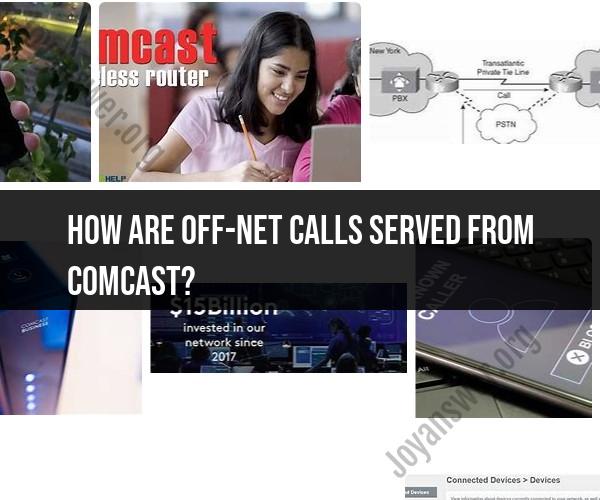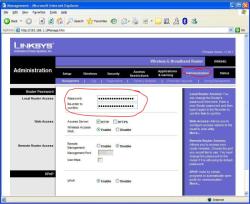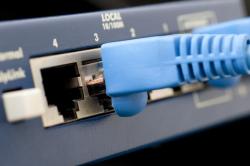How are off-net calls served from Comcast?
Off-net calls, also known as off-network calls, refer to calls that originate from a location on one telecommunications network and terminate on a location or network provided by a different telecommunications carrier or service provider. Comcast is a cable and telecommunications company that offers a range of services, including residential and business phone services. When you make off-net calls using Comcast's phone service, here's how they are typically served:
Origination Point: An off-net call starts from a Comcast customer's premises or device, such as a landline phone, mobile phone, or VoIP (Voice over Internet Protocol) phone, connected to Comcast's network.
Dialing the Number: The Comcast customer dials the phone number they wish to call. This number can be within Comcast's network (on-net call) or outside Comcast's network (off-net call), such as a call to a non-Comcast landline or a mobile phone.
Call Routing: When the Comcast customer dials the number, Comcast's phone system determines whether the call is an off-net or on-net call based on the destination number. If it's an off-net call, Comcast's system routes the call accordingly.
Interconnection: For off-net calls, Comcast's phone system needs to interconnect with other telecommunications carriers and networks to reach the destination number. Comcast has agreements and peering arrangements with various carriers to facilitate these connections.
Transmission: The call is transmitted from Comcast's network to the network of the destination carrier, which may be a different telecommunications company.
Routing to the Destination: The destination carrier's network routes the call to the intended recipient's phone, which can be a landline or mobile phone.
Completion: The call is completed when the destination phone rings, and the recipient answers. The voice data is transmitted in real-time between the calling and receiving parties.
Billing: Comcast may bill the customer for the off-net call based on its pricing and calling plan. Different rates may apply for off-net calls depending on the destination, duration, and any applicable long-distance or international calling charges.
It's important to note that the specific details of how off-net calls are served may vary based on the type of phone service plan you have with Comcast and the technology used for the call (e.g., traditional landline, VoIP). Additionally, the call routing and interconnection processes are managed by Comcast's telecommunications infrastructure to ensure that calls are delivered reliably to their intended destinations, whether on-net or off-net.
Unraveling the Mechanics of Off-Net Calls via Comcast Services
Off-net calls are phone calls made from a Comcast customer's phone to a phone number that is not on the Comcast network. This includes calls to landline numbers, mobile phones, and phone numbers on other VoIP networks.
When a Comcast customer makes an off-net call, their call is routed through a network of switches and trunks to the network of the other caller. This routing process is complex and involves a number of different steps, but it can be broken down into two basic phases:
- Phase 1: Origination
When a Comcast customer makes an off-net call, their call is first routed to a Comcast switch. The switch identifies the phone number that the customer is calling and determines the best route to get the call to its destination.
- Phase 2: Termination
Once the Comcast switch has determined the best route for the call, it routes the call to the network of the other caller. The call is then terminated on the other caller's network and the two callers are connected.
Off-Net Call Routing: How Comcast Handles External Calls
Comcast uses a variety of factors to determine how to route off-net calls. These factors include:
- The destination of the call: Comcast has direct connections to a number of other phone networks. This allows Comcast to route calls directly to these networks, which can improve call quality and reduce call setup time.
- The type of call: Comcast uses different routing methods for different types of calls, such as landline calls, mobile phone calls, and VoIP calls. This helps to ensure that all types of calls are routed efficiently and reliably.
- The time of day: Comcast may use different routing methods depending on the time of day. For example, Comcast may route calls through different networks during peak calling hours to help reduce congestion and improve call quality.
Ensuring Connectivity: Comcast's Approach to Off-Net Calls
Comcast is committed to ensuring that its customers have reliable connectivity for off-net calls. Comcast uses a variety of measures to achieve this, including:
- Investing in its network: Comcast is constantly investing in its network to improve call quality and reliability. This includes upgrading its switches and trunks, and expanding its direct connections to other phone networks.
- Monitoring its network: Comcast monitors its network 24/7 to identify and resolve any potential problems that could impact off-net call quality or reliability.
- Working with other phone networks: Comcast works closely with other phone networks to ensure that calls between Comcast customers and customers of other networks are routed efficiently and reliably.
Conclusion
Off-net calls are an important part of Comcast's phone service. Comcast uses a variety of technologies and methods to ensure that its customers have reliable connectivity for off-net calls. Comcast is constantly investing in its network and working with other phone networks to improve the quality and reliability of off-net calls.













